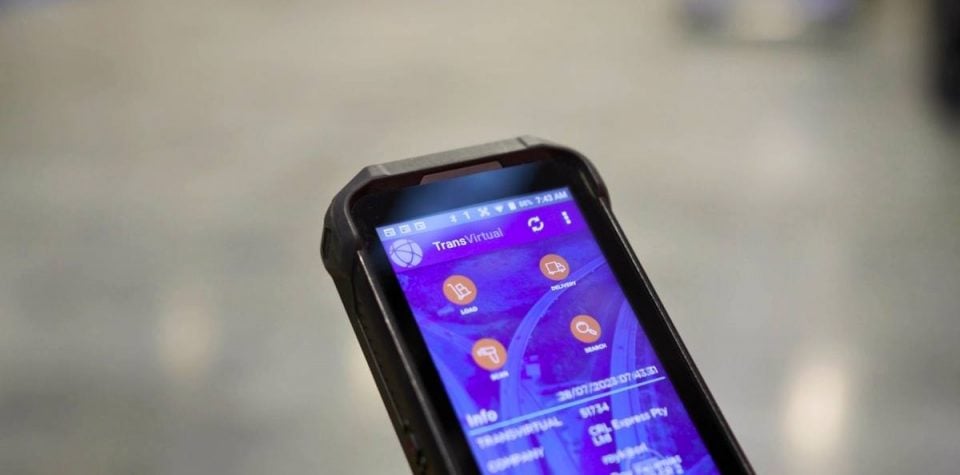Table of Contents:
- The Songlines
- “I hear the bullroarer…”
- The Singing Line
- Mr Stuart’s Track
- Building the line
- From Morse Code to Mobile Phones
- The coming of the mail
- Number, please
- Radio ga-ga
- The Digital Age
Communication in Australia has come a long way from the dots and dashes of Morse Code transmitted along the wires of the Overland Telegraph Line.
– .-. .- -. … …- .. .-. – ..- .- .-..
– The word “TransVirtual” written in Morse Code.
These days, we take communication for granted. Picking up a smartphone and accessing the internet has become second nature for billions of people all over the world. Modern communications have certainly revolutionized the delivery and logistics industry. These days, getting updates on traffic conditions, alternative route options, delivery status and customer feedback is as simple as a glance at a screen. But communication in Australia hasn’t always been this easy.
In this blog post, we will take a short journey through the history of communications in Australia: from the ancient communication methods used by our Aboriginal peoples to the development of the internet, mobile phones and beyond.
The Songlines
Voices were the first form of communication in Australia. For thousands of years before Europeans came to Australia, Aboriginal people communicated across the land with songs, stories, and legends. Their songlines radiated out across the landscape, telling tales of how the world came into being, how to navigate through it, where to find food and water, and how to behave when they encountered people from other, distant tribes.
These songs were carried by foot, slowly and inexorably across the country. They were living, breathing communication tools, constantly being amended and added to by the people who sang the songs and told the stories.
“I hear the bullroarer…”
A bullroarer is a thin, curved piece of wood that is swung around on a thread of woven bark to produce a deep, humming sound that can be heard from far away. Bullroarers were an important communication tool for many Australian Aboriginal groups. By swinging a bullroarer at different speeds, contrasting rhythms and pitches could be used to communicate various messages, such as signalling the location of a camp or warning of danger.
You could almost say that the bullroarer was Australia’s first telephone.
The Singing Line
Australia lies at the end of the world, hidden in the middle of an almost endless ocean. For the country’s early settlers, the distance between Australia and the old world of Britain presented an almost insurmountable problem when it came to communication.
As Australia grew from a small cluster of convict settlements to a fully-fledged nation, it needed a way for information to reach it rapidly. In the early days, news, dispatches and mail from Britain took months to make the long, perilous journey to and from Australia.
During the 19th century, the new technology known as the telegraph, which enabled communication between different parts of the world, was rapidly expanding its network of copper wires and undersea cables across the globe. It was the answer to Australia’s communication problem.
Mr Stuart’s Track
There was fierce competition between Australia’s colonial states about who would find a route across the continent that could be used to construct a telegraph line that would connect the country with the rest of the world. The Victorian Government had organized the Burke and Wills expedition to cross the continent to the Gulf of Carpentaria in 1860. But although Burke and Wills did succeed in crossing Australia, the expedition ended in disaster, with both men dying alone in the bush.
Meanwhile, the South Australian government had organized an expedition led by the Scottish explorer John McDouall Stuart. After six attempts, Stuart succeeded in crossing the continent from north to south. On the 24th of July 1862, he reached the northern coast of Australia at a place that he named Chambers Bay.
At around the same time, the Northern Territory was transferred into the control of South Australia. The aim of this was to secure land for an international telegraph connection running from Adelaide to Darwin.
Finally, in 1870, the South Australian government agreed to construct the 3,200 km of telegraph line from Port Augusta in South Australia to Darwin. The stage was now set for the start of the biggest infrastructure project that Australia had ever undertaken: the construction of the Overland Telegraph Line. It seemed like a simple job: a single strand of wire transcribing a straight line across the continent. It would turn out to be anything but simple.
Building the line
Charles Todd, the South Australian Superintendent of Telegraphs, was appointed as the head of the Overland Telegraph Line project. Todd devised a timetable for the completion of the immense project, and when the contracts were awarded, it was stipulated that it would take no more than two years to construct the line.
Todd divided the route into three, 600-mile (970-kilometre) sections, with the northern and southern sections being handled by private contractors, and the central section to be constructed by his own Department of Telegraphs.
The line would comprise 36,000 poles placed 80 metres apart, with repeater stations that would receive, amplify and relay the telegraph signals to be built every 250 kilometres.
Construction of the northern section began in September 1870, and almost immediately ran into difficulties. The Wet Season began in November, with heavy rain which waterlogged the ground and made work impossible. The construction workers went on strike, complaining of rancid food and disease-spreading mosquitoes, and on May 3rd, 1871, the private contract was cancelled on the basis of insufficient progress. The South Australian government now had to construct an additional 700 km of the northern section of the line, along with the central section that they had already begun.
Meanwhile, the British-Australian Telegraph Company was laying an undersea cable from Banyuwangi in Java, to Darwin. This cable was finished on the 31st of December 1871, in readiness for the completion of the Overland Telegraph Line.
After almost two years, the two ends of the Overland Telegraph Line were joined at Frew’s Ponds, 640 kilometres south of Darwin, on Thursday, August 22nd, 1872. Charles Todd had the honour of sending the inaugural message along the completed line. His message read:
WE HAVE THIS DAY, WITHIN TWO YEARS, COMPLETED A LINE OF COMMUNICATIONS TWO THOUSAND MILES LONG THROUGH THE VERY CENTRE OF AUSTRALIA, UNTIL A FEW YEARS AGO A TERRA INCOGNITA BELIEVED TO BE A DESERT
From Morse Code to Mobile Phones.
Charles Todd’s telegraph line was the first step on the journey to our modern age of communication. From those simple beginnings, the telegraph network spread out to cover the entirety of Australia…and the world.
The coming of the mail
For the first decades of British governance in Australia, no reliable mail service existed on the new continent. Messages between the different colonies (and within them) were carried by private individuals or by the captains of sailing ships.
Tasmania established the first Government post office in Hobart and the other colonies quickly followed. Soon, Australia’s fledgling mail network was entirely operated and regulated by the government. The country’s first postmaster, an English ex-convict named Issac Nichols, was appointed as Postmaster in Sydney in 1809.
Number, please
In 1879, Australia’s first telephone service was launched. It connected the Melbourne and South Melbourne offices of Robinson Brothers: an engineering firm. The private Melbourne Telephone Exchange Company opened Australia’s first telephone exchange in August 1880.
The first public telephone exchange was opened in Sydney in 1882 and this made personal voice communication available to the public for the first time.
Radio ga-ga
Radio was first used in Australia in 1905, although experimental broadcasts had been made as early as September 1987. And radio soon revolutionized communications across the country’s vast expanses. Radio allowed medical advice, school lessons, gossip and news to be shared among the isolated rural communities and remote stations of the Outback.
In the vast and sparsely-populated Outback, radio brought a sense of connection and community. It also played a vital role in facilitating transportation and commerce. It provided communications for the Royal Flying Doctor Service and the Australian Inland Mission.
The Digital Age
The days of telegraphs, landline phone calls, paper trails and CB radio are gone. Sure, they still work, but they can be unreliable, slow and wasteful. Effective logistics strategies are now the preserve of software, internet communication, data analytics and transport management.
At TransVirtual, we are proud to be part of the ongoing drive towards making Australian logistics easier, more efficient and more sustainable. We know that the logistics industry is built upon the hard work of the previous generations, who opened up Australia and took our country’s communications network from Morse Code to 5G. And whatever lies on the road ahead, we will be there to help make your logistics business work smarter, go further and keep your customers happy, wherever they are.



